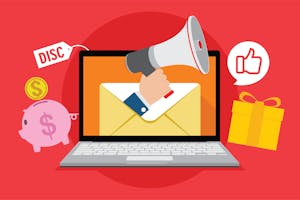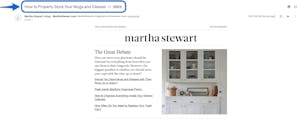- 11 minute read
- Digital Marketing
- Email Marketing
Understanding the 5 Most Important Email Marketing Benchmarks
All Skill Levels
Get a behind-the-scenes-look into FareHarbor's 2024 season

You’ve put considerable time and effort into crafting your latest outreach email, and now you want to make sure that people actually open it. You need an enticing email subject line to hook your audience and get them to click on that email! Writing catchy subject lines takes your email marketing to the next level – after all, there’s nothing worse than your email sitting unopened in someone’s inbox.
Since the email subject line is the first part of the email your audience will see, it needs to be compelling and intriguing. Even though they are a small part of your overall message, email subject lines are the key to standing out in a full inbox. This guide will cover email subject line best practices and formulas you can apply to your own emails.
 Create a Sense of Urgency
Create a Sense of UrgencyCommunicating a feeling of urgency or FOMO (fear of missing out) is a great way to compel readers to open an email. For example, you could convey a sense of urgency by saying that your current promotion for 10% off holiday tours will expire in 24 hours (“Time-sensitive offer on all holiday tours”). While this can be a great tactic for writing email subject lines, be careful not to overuse it. Readers won’t think much of these offers if they see similar subject lines every other week.

 Get Personal
Get Personal In an industry as diverse as ours, no two tour guests are the same. Keep this in mind when sending emails by using personalized content in the subject line. Use the subscriber’s name and include some topics of interest from data like their age, location, and more. Catering the subject line to the individual increases open rates by 26% (Campaign Monitor). Learn more about how to use personalized content in email in this guide.
 Spark Curiosity
Spark CuriosityThink of the email subject line as your chance to make a first impression. It’s not the place to give everything away – you want readers to click through to the email to learn more. While some subject lines offer all the important information (“20% off gift cards this week only”), others work by piquing readers’ interest and requiring them to open the email to get more information (“You won’t believe what animal this guest saw on her kayak tour…”). Try this method and see if it results in higher open rates.

The what’s new email is great for sharing your latest blog post or even a recent video you shared on social media. Using the word “new” piques readers’ interest.
Example: “NEW: 5 Essentials to Pack for Your Sightseeing Tour”
The how to email offers valuable insights to readers who are planning a trip to your area or have already booked a tour or activity.
Example: “How to visit Venice on a budget”

The here’s why email gives readers a behind-the-scenes look at your business. It helps them understand your philosophy or mission and decision-making and see the human elements of your business. It’s also a great way to highlight lesser-known aspects of your business.
Example: “Here’s why we love our customers” (share awesome reviews from recent guests).
Example: “Here’s why we keep our tour groups under 15 people” (list reasons why having small tours makes for a better experience).
Avoid this/these emails are a fun way to give information about your business or location with a unique twist that gets readers to click on the email.
Example: “Avoid these common tourist mistakes”
Quick announcement emails are great for when you have something new you want to share with subscribers in a short and sweet format. This could be a policy change or other announcement that’s relevant to readers.
Example: “Quick announcement: 2021 tour dates are live!”
The versus email is a unique way to compare two tours you offer, two destinations in your area, or any other topics you’d like subscribers to know about, while highlighting your offerings.
Example: “Private versus public tours – which is right for you?”
Example: “Kayaking versus canoeing”
Example: “Wine tours versus beer tours”
As you experiment with different subject lines, keep track of what does and doesn’t work for your business. A/B testing helps you gather actionable data about your email marketing campaigns by showing you which of two elements, like an email subject line, performs best with a segment of your audience. Beyond subject lines, there are many other aspects of emails you can test using the A/B method.
Play around with the formulas and examples in this guide to see how you can tailor them to your own email marketing strategy. Want more email tips? Check out these guides.